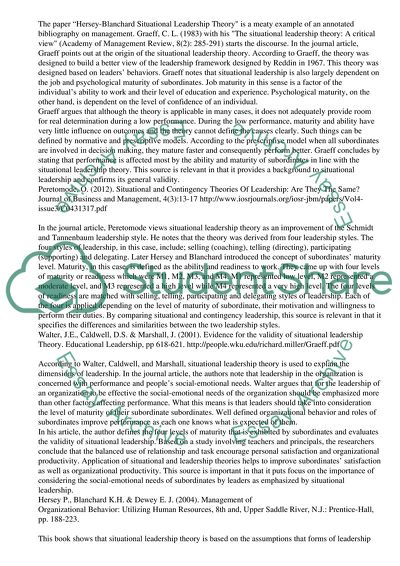Hersey-Blanchard Situational Leadership Theory Annotated Bibliography. https://studentshare.org/management/1806949-hersey-blanchard-situational-leadership-theory
Hersey-Blanchard Situational Leadership Theory Annotated Bibliography. https://studentshare.org/management/1806949-hersey-blanchard-situational-leadership-theory.


